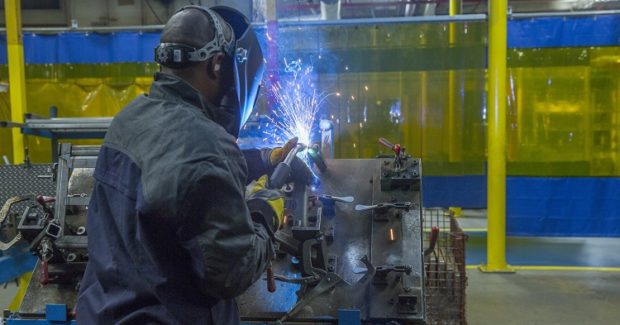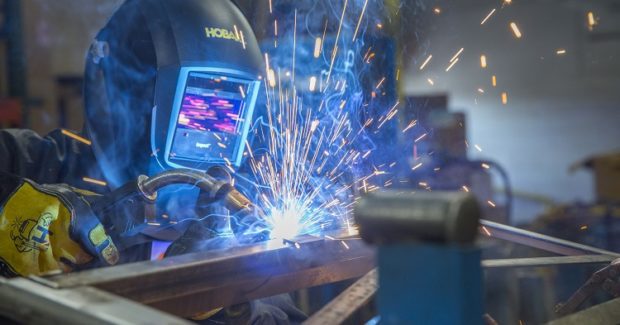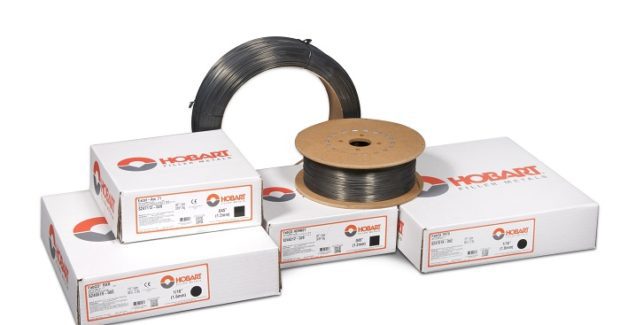Wire Feeding Issues? Consider These Common Causes First
Though welding operators often assume that the filler metal is the source of a wire feeding problem, it’s important to consider other common causes before taking any corrective steps. Don’t assume that cleaning lube off the wire or adding more lube is the answer. While there are many potential causes to poor wire feeding, many of them have simple solutions.
Posted: February 5, 2018
Poor wire feeding is a common challenge in many welding operations that can result in increased downtime, wasted consumables and weld quality issues. Many different variables, or a combination of variables, can cause wire feeding issues. While welding operators often assume that the filler metal is the source of the problem, it’s important to consider other common causes of wire feeding issues before taking any corrective steps. When a source of the problem can’t be determined, it’s always a good idea to consult the filler metal manufacturer.
THE ROLE OF FILLER METAL IN FEEDABILITY
Filler metal manufacturers produce solid and tubular wires with a lube coating to aid in wire feeding and weldability; for this reason, there are specific instructions for storage and reconditioning of filler metal. For example, it is not recommended to bake or recondition many welding wires because this can have a negative impact on the lube coating and its intended purpose. Under normal circumstances, when the wire has been properly stored in good conditions and is new out of the box (within product warranty), it should not require any type of lube aid added or removed by the operator to improve wire feeding. Some operators may see or feel this coating and assume that it is dirt or contamination that should be removed, or perhaps that more lube should be added using products such as cleaning pads or lube pads. What exactly are these sorts of added products?
Lube pads, cleaning pads and related products do have a place and serve a purpose. They are typically marketed to allow smooth feeding of wire that has a poor cast, excessive helix, a rusty surface or when using long feed liners (over 10 ft). However, some welding filler metals may use different lubes to aid in better feeding through longer gun liners or for more automated processes that require longer feed lengths. If an operator determines that using a cleaning or lube pad is necessary, it’s important to be aware of some common misconceptions and potential issues that can arise when using these products. Lube pads may be used in situations where operators believe more lube must be added to the wire to improve feedability. However, adding lube to the wire can result in clogged liners, tips and gas diffusers. Too much lube can also increase the risk of introducing more hydrogen, which increases diffusible hydrogen levels in the weld. This could potentially decrease the product’s crack resistance.
When using these pads, it’s important to monitor their condition. If a pad becomes too saturated, it could potentially pull in other outside contaminants and reapply those to the wire as it goes through the pad into the gun. Also, if the pad becomes too worn then pieces of it could potentially make their way through with the wire, contributing to gun- and liner-related issues. Many filler metal manufacturers don’t recommend using these products because they are an added variable outside of the manufacturer’s control that can impact how the wire is designed to perform. Regardless of opinion, it’s best to not add cleaning or lube pads to filler metals under normal conditions (such as a newer product within warranty). This way, in the unlikely event that there is a lube-related issue with the wire, it can be witnessed and resolved by the manufacturer. Instead of going straight to a lube pad or cleaning pad, it’s best to evaluate the entire set up and check all of the potential variables that may be causing wire feeding issues.
TROUBLESHOOTING WIRE PROBLEMS
As previously stated, wire feeding issues can stem from many different variables. If lube on the wire is thought to be the issue, it’s important to first evaluate the following factors and rule them out as the possible cause:
- Feeder or equipment issues: If the drive rolls don’t move when the gun trigger is pulled, this could be a feeder relay malfunction or a broken relay. No response when pulling the trigger could also stem from a broken control lead. If an adapter is used to connect the gun to the feeder, a poor adapter connection could be the culprit of wire feeding problems. Improper guide tube installation can also keep the wire from feeding properly from the drive rolls into the gun.
- Drive roll considerations: Using the incorrect style or size of drive roll is another common source of poor wire feeding. Drive roll size should match wire size, and choosing the right drive roll style depends on the type of wire being used. A solid wire is typically used with a standard V-shaped drive roll, where a V-knurled drive roll tends to work best for cored wires. Proper drive roll tension is also critical in smooth wire feeding. Too much tension can crush the wire or cause wire peeling and liner debris.
- Check the liner: Liner issues are among the most frequent causes of wire feeding problems. Be sure to check that the liner is the proper length, size and style for the wire size and type being used. Also look for debris buildup inside the liner, which can cause feeding issues.
- Watch for contact tip wear: Make sure the contact tip and diffuser aren’t worn or dirty. The contact tip can wear over time, making the hole more oblong in shape. In addition, small balls of spatter can become fused inside the contact tip, causing burnback or poor wire feeding.
- Inspect the gun: If it’s determined that none of the above factors are causing the poor wire feeding, it may be that the wrong length of gun is being used. When the gun cable is too long, it can cause issues with kinking or bunching. Be sure to keep the gun cable as straight as possible and choose the proper gun length for the application to prevent these issues. Guns of excessive length may provide greater mobility for the welder but require significantly higher forces to feed the wire.
CONSIDER THE POSSIBILITIES
Solving the problem of poor wire feeding involves considering many factors. If no problem is found with the feeder, drive rolls, liner, contact tip, diffuser, gun or cable, then it’s time to contact the filler metal manufacturer for guidance on how to check for problems with the wire lube. Don’t assume that cleaning lube off the wire or adding more lube is the answer. While there are many potential causes to poor wire feeding, many of them have simple solutions.














